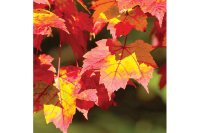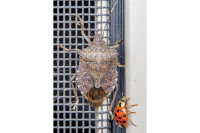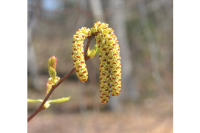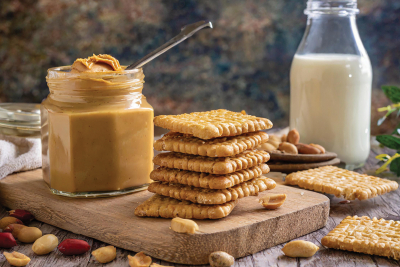Notes from a plant nerd: Don’t you boil this cabbage down
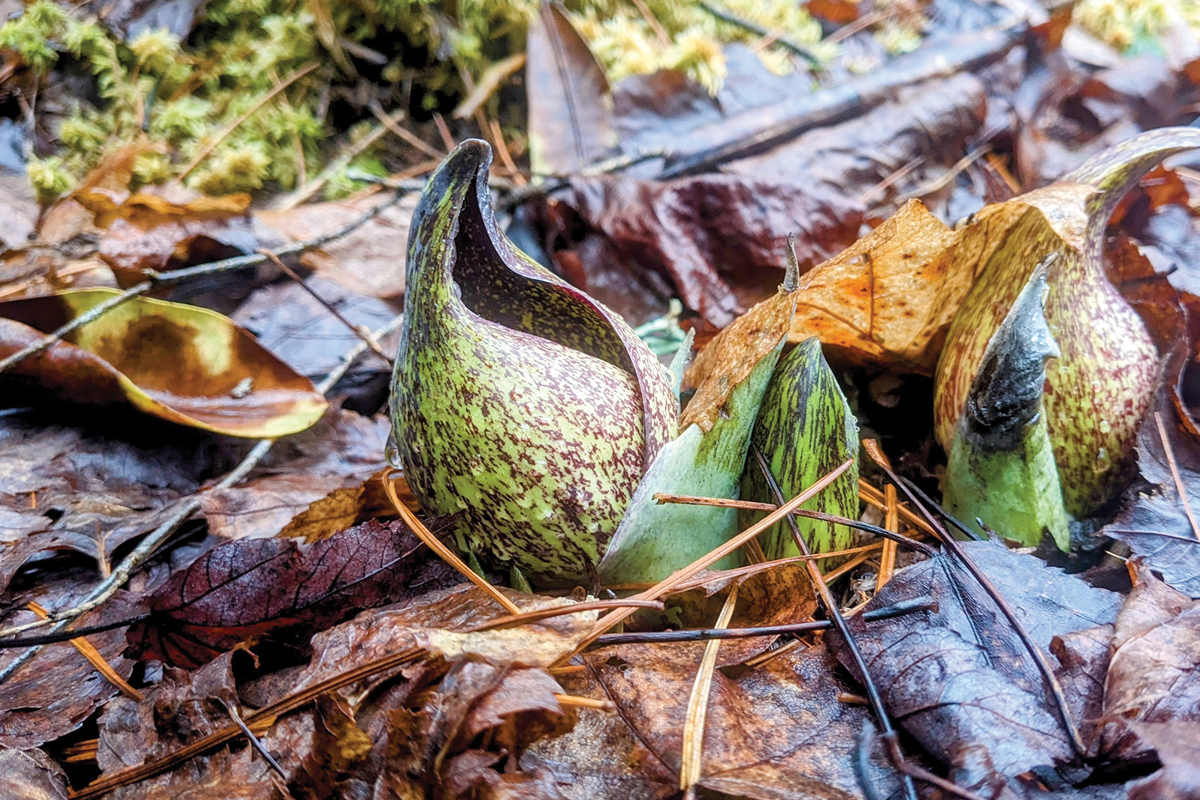 A skunk cabbage emerges from the ground at the Highlands Botanical Garden. Adam Bigelow photo
A skunk cabbage emerges from the ground at the Highlands Botanical Garden. Adam Bigelow photo
There are so many different native plants and flowers that I have yet to see growing in the wild. And I really want to.
These include plants that grow nearby but are rare and specialized enough that I just haven’t found them yet, as well as plants that live in the southeastern U.S. outside of the mountain region that I would love to go meet for the first time, even common ones. I refer to these plants as my botanical bucket list.
One of the weirdest-looking flowers that I have ever seen I’ve yet to find blooming in the wild, only in captivity. This is how I describe plants growing in arboretums, botanical gardens and native plant gardens, both public and private. They’re kind of like zoos for plants. And while it is great to be able to visit these gardens and observe many different types of plants, the lure of finding them in the wild pulls me more and more as my life develops.
So, this past weekend I headed up to the Highlands Botanical Garden to see if the skunk cabbage (Symplocarpus foetidus) were up and in bloom. They were, and they were beautiful. The skunk cabbage is creepy, odd and interesting, but seeing it outside of its garden-gate cage would require driving to the northern mountain or piedmont counties of North Carolina, as we are outside the plant’s natural range here in the southwestern mountains.
This northern, or boreal, species can be found throughout the northeastern U.S. growing in swamps and wetlands from the coast to the interior. Among its many fascinating attributes is that even in Maine and across eastern Canada, skunk cabbage blooms in winter, in February. It can even bloom while covered in a deep blanket of snow. Skunk cabbage flowers are able to produce heat through a biochemical reaction in the flowers called thermogenesis that has been measured as high as 60 degrees Fahrenheit. This is plenty warm enough to melt the snow covering it so that its pollinators can find it.
Skunk cabbage produces a type of flower called a spadix, covered by a spathe. This type of flower can be observed in the spring wildflower called jack-in-the-pulpit (Arisaema triphyllum) and in the common houseplant called peace-lily (Spathyphyllum spp.). A hood of fused flower petals (the spathe) grows around the cluster of yellow flowers on the inside. This protective covering causes some people to think that these plants are carnivorous like pitcher plants are (Sarracenia spp.). But while this flower likes to attract insects for pollination, it does not consume them.
Related Items
Skunk cabbage flowers are pollinated mostly by flies, gnats and sometimes ground beetles that are attracted to the mottled red and green petals, and the foul aroma put off by the flower. This common tactic for pollinator attraction tricks the insects into thinking that the flower is a rotting animal. The aroma of the flower is only one reason for the common name of skunk cabbage. Once the leaves unfurl and grow larger, a crushed or bruised leaf will stink of skunk and other nastiness.
These large leaves give rise to the second part of this plant’s common name, as they are large, green leaves that resemble the leaves of cabbages, especially the outer sun-leaves. As soon as one starts gathering what looks like a rogue cabbage growing in a creek or swamp, the fetid odor easily gives the plant’s identity away. I have read that the young leaf shoots are edible, but I haven’t met anyone brave enough to try them. I think I’ll stick to coleslaw and kimchi, thank you.
If you’d like to see the skunk cabbage in bloom, it can be found growing at the aforementioned Highlands Botanical Garden, as well as the Asheville Botanical Garden and Dr. Dan Pittillo’s Nodding Trillium Garden here in Cullowhee, which is maintained by the Highlands-Cashiers Land Trust. If anyone wants to take me to a population of skunk cabbage growing in the wild, let me know. I’d love to check this plant off of my botanical bucket list.
(Adam Bigelow lives in Cullowhee. He leads weekly wildflower walks most Fridays and offers consultations and private group tours through Bigelow’s Botanical Excursions. This email address is being protected from spambots. You need JavaScript enabled to view it..)





